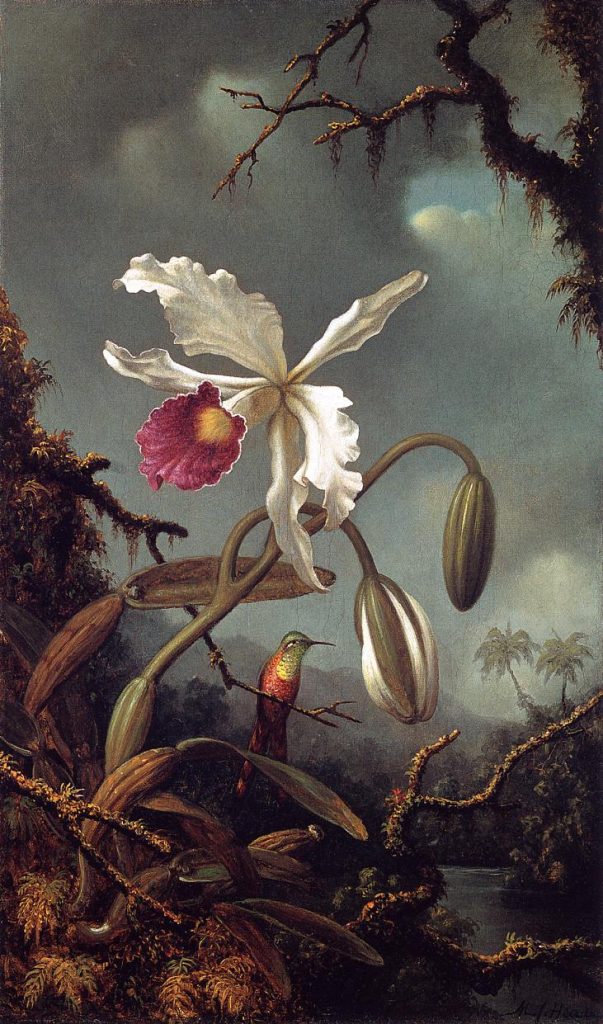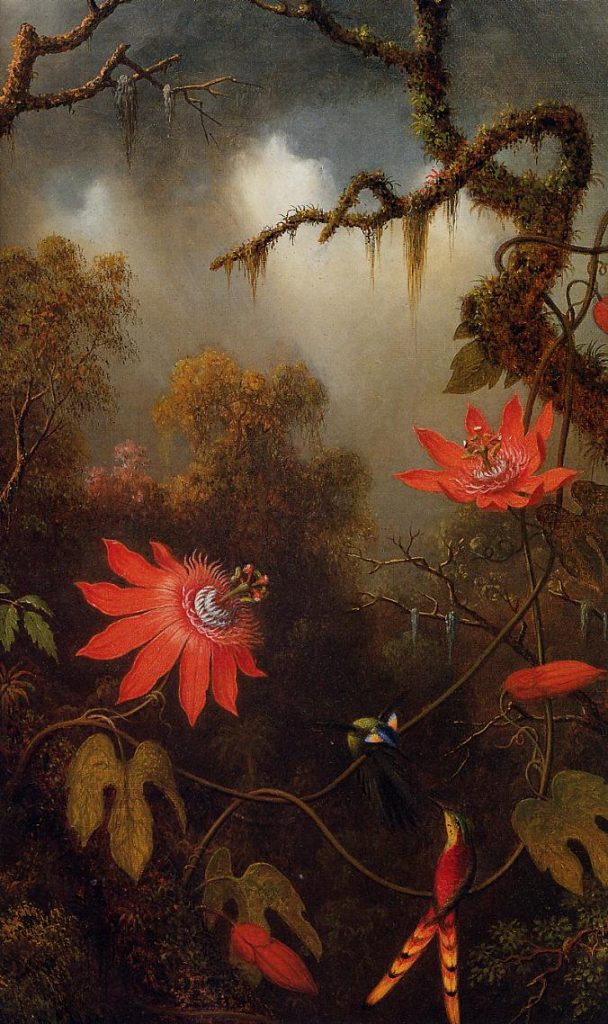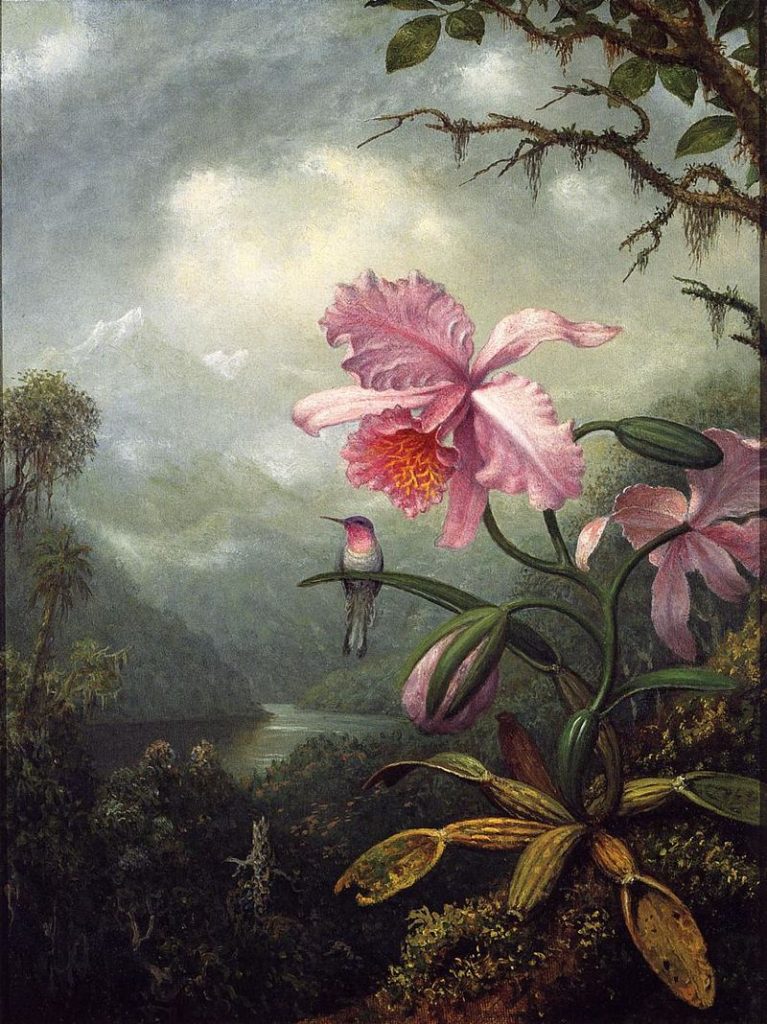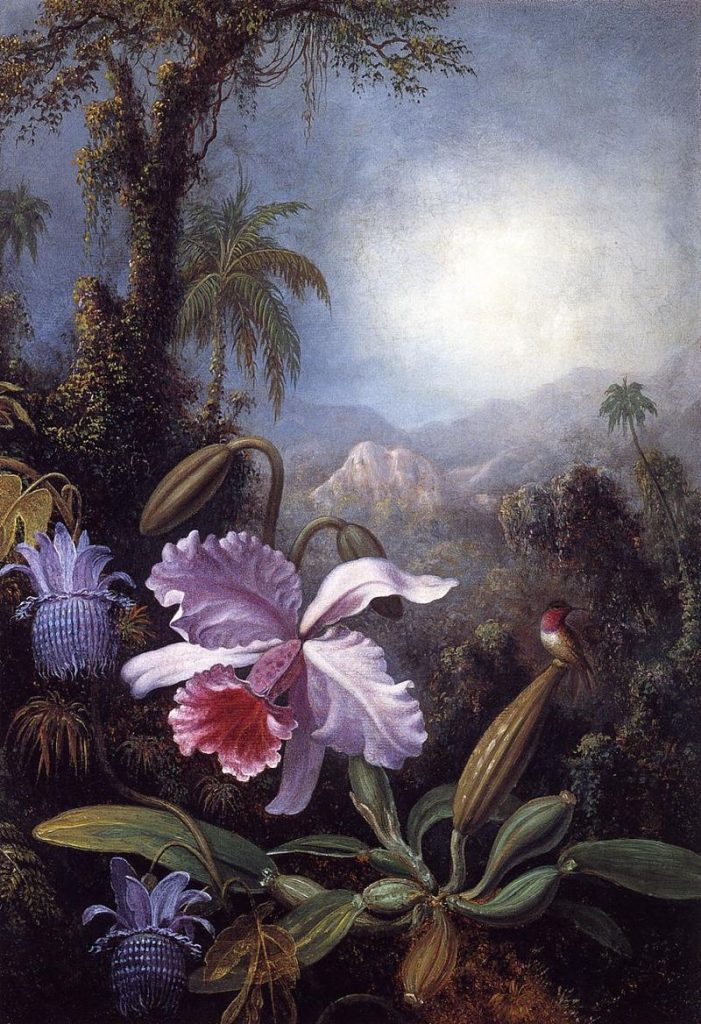
Martin Johnson Heade (1819-1904) was an American painter known for his contributions to American art during the 19th century. Heade’s work encompassed a variety of subjects, including landscapes, still lifes, and wildlife. He is particularly renowned for his luminous and meticulously detailed depictions of tropical and coastal landscapes, as well as his beautiful floral and bird studies.

Early Life and Education:
- Martin Johnson Heade was born on August 11, 1819, in Lumberville, Pennsylvania, USA.
- He showed an early interest in art and began his formal training as an artist in his teens, studying under the portrait painter Edward Hicks.
- Later, Heade pursued further artistic education in Europe, particularly in Rome, where he was influenced by the European Romantic movement and the works of the Old Masters.
Artistic Style and Subjects:
- Heade’s artistic style is often associated with the Hudson River School, a 19th-century American art movement known for its romanticized and detailed landscapes.
- While Heade is sometimes grouped with the Hudson River School, his work also defied categorization, as he explored various subjects and styles throughout his career.
- Heade was particularly known for his “Gems of Brazil” series, which depicted the lush and exotic landscapes of South America. These paintings are characterized by their vivid colors, attention to botanical detail, and dramatic lighting.

Floral and Bird Studies:
- Heade was a skilled painter of flora and fauna. He produced a significant body of work featuring exquisite depictions of flowers and birds in naturalistic settings.
- His series of hummingbird paintings are among his most famous works. These small, meticulously detailed paintings capture the iridescence and vibrancy of these tiny birds.
Travels and Exploration:
- Throughout his life, Heade traveled extensively in the United States and South America. These travels provided him with abundant inspiration for his landscapes and nature studies.
- His exploration of the Florida Everglades in the 1880s resulted in a series of swamp and marshland paintings, which are considered some of his most original and distinctive works.

Recognition and Legacy:
- During his lifetime, Heade enjoyed some success as an artist, but he was not as widely recognized as some of his contemporaries.
- It was in the 20th century that Heade’s work began to receive more recognition and critical acclaim. His exquisite depictions of hummingbirds, in particular, became highly regarded.
- Today, Martin Johnson Heade is celebrated as one of America’s most accomplished and versatile 19th-century painters. His work is prized for its scientific accuracy, luminous quality, and its contribution to the documentation of America’s natural beauty.

Martin Johnson Heade passed away on September 4, 1904, in St. Augustine, Florida. His legacy continues to be celebrated, and his paintings are treasured for their artistic and scientific significance in the realm of American art.




